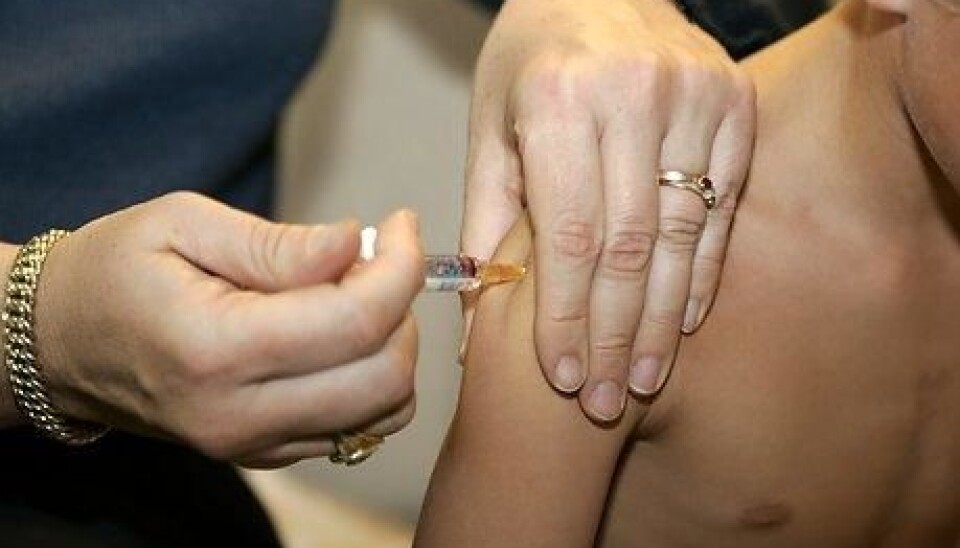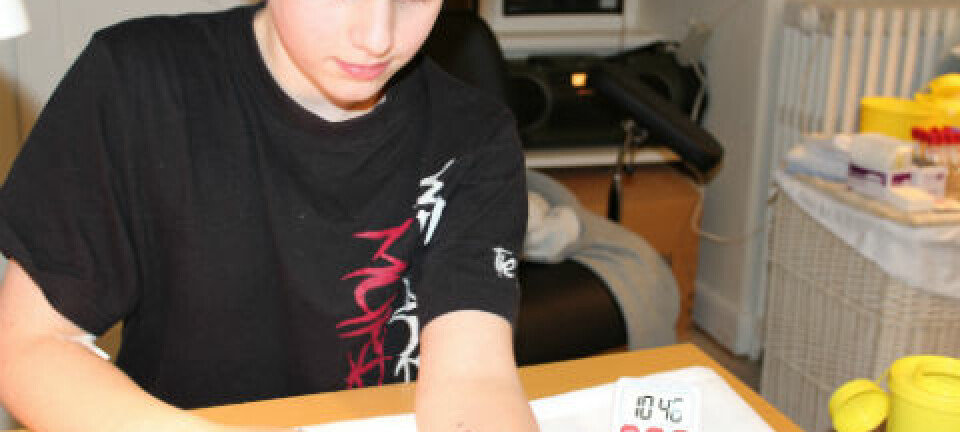
Vaccines change our immune defences
Vaccines against measles save more lives than we think. Research shows that the measles vaccine is effective against other fatal infections too.
Thousands of children in the third world die from infections every day. Danish researchers believe ordinary vaccinations can boost children’s immune defences – and save millions of lives.
Researchers at the State Serum Institute (SSI) have found potentially beneficial side effects of the measles vaccination. Their research shows the measles vaccination can reduce child mortality in developing countries by up to 30 percent; however, only a small part of this reduction derives from the vaccine’s protection against measles.
”We can see that the measles vaccine teaches the immune defence system how to deal with other infections,” says Professor Peter Aaby, who heads SSI’s Bandim Health Project. “Our results show that children with pneumonia, malaria and diarrhoea, who have been vaccinated against measles, are hospitalised for considerably shorter periods. This is a fortuitous positive effect that no-one has studied before.”
The Bandim Health Project studies the acute and long-term effects of vaccines in Guinea Bissau. The discovery of these side effects of the measles vaccine has the potential to revolutionise our understanding of the body’s immune defences.
Our results show that children with pneumonia, malaria and diarrhoea, who have been vaccinated against measles, are hospitalised for considerably shorter periods. This is a fortuitous positive effect that no-one has studied before.
The results were recently published in the British Medical Journal.
Immune defences can learn
The World Health Organization (WHO) and the whole of the world of medicine believe that each disease must be treated by its own vaccine. But the Danish researchers see an end to this traditional line of thinking.
The immune defences can learn from a given situation, e.g. by implementing the measles vaccine, and use the lesson in another situation, such as fighting other infections.
The new findings clearly show that vaccines against measles, smallpox, polio and tuberculosis have considerable but unspecified positive effects that can save thousands of lives.
”The WHO has never looked at the general effects of vaccines on all mortality,” says Aaby. “We’re the first to do that. It is problematic that normal vaccines’ effect on overall mortality has not been studied, because they can have wide-ranging consequences for dealing with child mortality in the world’s poorest countries.”
Dramatic impact of stopping vaccinations
The new results change central aspects of our knowledge about the immune defences and vaccinations. One dramatic consequence is that stopping smallpox vaccinations has a great negative impact on public health.
Discontinuing a vaccination programme when a disease has been eradicated may save money – but the vaccine’s positive impact on the whole immune defence system is lost, and this can cost lives.
”We’ve made two studies in Africa, and we can see a lower mortality rate among people who have received the smallpox vaccine than among those who have not. The effects are found up to 30 years after vaccination.”
This, he adds, indicates a need to study the side effects of the vaccines. Since the WHO expects to eradicate both measles and smallpox within 10-15 years, the problem can soon arise for these diseases.
Living vaccines best
Vaccines are either living or dead.
Living vaccines contain a weakened living version of the disease they aim to prevent or treat; the disease spreads in the body and the immune system recognises it as foreign, forms antibodies to destroy it and learns from its experience.
”Living vaccines against e.g. smallpox, measles, polio and tuberculosis create a semi-natural reaction in the body, and give the immune defences an overall boost,” says Aaby.
Dead vaccines comprise killed disease organisms plus secondary material to activate the immune defences, which then form antibodies against the disease.
But dead vaccines have negative side effects which affect girls in particular.
”Our results show that giving a girl the killed whooping cough vaccine after she has been given a measles vaccine earlier in her life corrupts her immune defences to such an extent that she is more receptive to other infections,” he says. “Our calculations show that this gives a mortality rate 33 percent higher than in the traditional group. In our study, that equalled between 500,000 and one million dead children a year.”
Girls’ immune defences are different from boys’
The Danish studies have shown that girls and boys have different immune systems from birth. As a consequence, says Aaby, there is a need for gender-specific vaccines.
There is some aspect of killed vaccines that girls cannot deal with.
”Perhaps it’s because their immune system is easier to derail than the boys’. Since women are supposed to get pregnant, they have different feedback mechanisms in their immune response.”
Vaccinate as early as possible
The latest and as-yet unpublished research results also threaten to overturn our understanding of the immune defences with regard to vaccines.
”Our latest results contradict international vaccination policies and the WHO’s recommendations for measles vaccination,” he says. ”They say a child should not be vaccinated while its mother’s antibodies remain in its blood. But our data actually indicates the opposite.
The study found that the earlier in life a child is vaccinated against measles, the better the reaction from the immune system – and the best time is immediately after birth.
The greatest effect was in children who still had their mothers’ antibodies in their blood when they were vaccinated. Children have their mothers’ antibodies in their blood until they are about a year old, but further studies are needed to determine the optimal time for vaccination.
Aaby is convinced that if they implement all of the latest results in the vaccination guidelines, we’ll see a pronounced fall in child mortality throughout the world.
Read the article in Danish at videnskab.dk
Translated by: Michael de Laine





